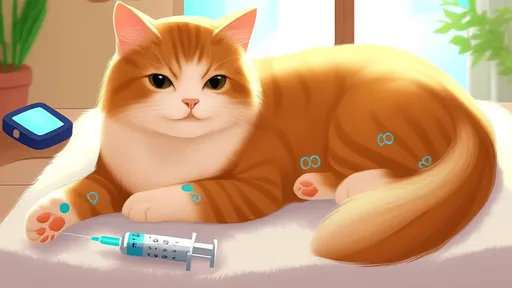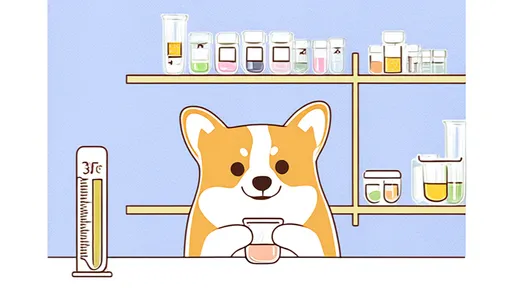As pet owners become increasingly aware of the importance of joint health for their furry companions, the market for pet joint supplements has flourished. Among these, joint powders have gained particular popularity due to their versatility and ease of administration. However, the effectiveness of these supplements largely depends on proper incorporation into your pet's daily meals.
Understanding Joint Powders
Joint powders typically contain a blend of glucosamine, chondroitin, MSM, and other beneficial compounds designed to support cartilage health and reduce inflammation. Unlike pills or chews, powdered forms offer flexibility in dosing and can be particularly useful for pets who are picky eaters or have difficulty swallowing tablets. The fine texture allows for seamless mixing with various types of pet food, making it nearly undetectable to even the most discerning canine or feline palate.
The Gradual Introduction Approach
When first introducing joint powder to your pet's diet, patience is key. Start with a quarter or half of the recommended dose mixed into their regular food. This gradual approach serves two purposes: it allows your pet's digestive system to adjust to the new supplement, and it gives you the opportunity to monitor for any potential adverse reactions. Over the course of 7-10 days, you can gradually increase to the full recommended dosage as your pet becomes accustomed to the new addition.
Food Pairing Strategies
The type of food you mix the joint powder with can significantly impact its acceptance. For dry kibble, lightly moistening the food with warm water or low-sodium broth before adding the powder helps the supplement adhere better. With wet food, thorough mixing is essential to ensure even distribution. Some pets may initially detect the supplement's presence, so pairing it with strongly scented foods like fish-based varieties or adding a small amount of their favorite topping can help mask any unfamiliar tastes.
Timing Matters
Consistency in timing plays a crucial role in the effectiveness of joint supplements. Administering the powder with the same meal each day helps maintain steady levels of the active ingredients in your pet's system. Many veterinarians recommend giving joint supplements with the evening meal, as this coincides with the body's natural repair processes that occur during rest. However, splitting the dose between morning and evening meals can also be effective, particularly for larger dogs or those with more advanced joint issues.
Overcoming Resistance
Even with the best mixing techniques, some pets may initially resist their supplemented meals. In such cases, creative solutions become necessary. One effective method involves mixing the powder with a small amount of a highly palatable food (like plain yogurt or pumpkin puree) and offering it as a "special treat" before the main meal. Another approach is to gradually acclimate the pet by first mixing the powder with their favorite treats before transitioning to regular meals.
Storage and Freshness Considerations
Proper storage of joint powder directly impacts its efficacy and palatability. Most joint supplements should be kept in a cool, dry place away from direct sunlight. Some formulations may require refrigeration after opening. Always check the expiration date and be mindful of any changes in color, texture, or smell that might indicate the product has degraded. Using a clean, dry scoop each time prevents moisture contamination that could lead to clumping or spoilage.
Monitoring and Adjustment
After establishing a routine, careful observation of your pet's response is essential. Look for positive signs like increased mobility and activity levels, as well as potential negative reactions such as gastrointestinal upset. Regular veterinary check-ups can help assess whether the current dosage remains appropriate as your pet ages or if their condition changes. Remember that joint supplements work best as part of a comprehensive approach that includes weight management and appropriate exercise.
Special Considerations for Multi-Pet Households
In homes with multiple pets, ensuring each animal receives their proper dose requires special attention. Feeding pets separately is ideal when supplementing, as it prevents accidental sharing or food stealing. For pets with vastly different sizes or needs, using distinctly colored bowls or feeding in separate rooms can help maintain the correct supplementation regimen for each individual.
The Long-Term Perspective
Incorporating joint powder into your pet's diet is typically a long-term commitment. While some effects may be noticeable within weeks, the full benefits often take several months to manifest. Maintaining consistency even during periods when your pet seems particularly spry is important, as the supplements work preventatively as well as therapeutically. Many pet owners find that establishing this routine early, before significant joint issues develop, yields the best long-term results for their companion's mobility and comfort.
Beyond the Powder
While proper administration of joint powder forms a crucial part of joint health management, it's important to remember that supplements work best as part of a holistic approach. Maintaining an appropriate weight through proper diet and exercise, providing orthopedic bedding, and incorporating gentle, joint-friendly activities all contribute to your pet's overall joint health. Regular veterinary consultations will ensure that your supplementation strategy remains appropriate as your pet's needs evolve throughout their life stages.

By /Jul 31, 2025

By /Jul 31, 2025

By /Jul 31, 2025

By /Jul 31, 2025

By /Jul 31, 2025

By /Jul 31, 2025

By /Jul 31, 2025

By /Jul 31, 2025

By /Jul 31, 2025

By /Jul 31, 2025

By /Jul 31, 2025

By /Jul 31, 2025

By /Jul 31, 2025

By /Jul 31, 2025

By /Jul 31, 2025

By /Jul 31, 2025

By /Jul 31, 2025

By /Jul 31, 2025

By /Jul 31, 2025

By /Jul 31, 2025